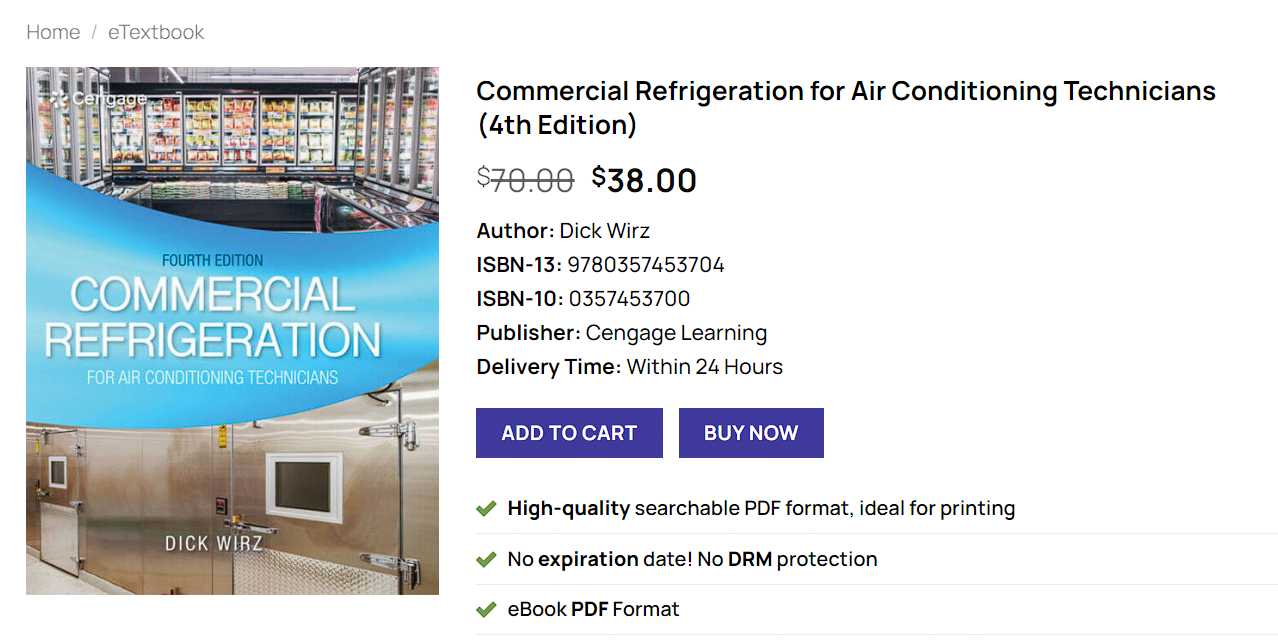Commercial Refrigeration for Air Conditioning Technicians 4th Edition plays a critical role in various sectors, ranging from supermarkets and restaurants to warehouses and food processing facilities. Understanding the fundamentals of these refrigeration systems is essential for air conditioning technicians, whose expertise ensures that these systems operate efficiently and reliably. At its core, commercial refrigeration involves the process of removing heat from a low-temperature reservoir and transferring it to a high-temperature environment. This fundamental principle underpins all refrigeration systems, regardless of their specific applications or configurations.
The evolution of refrigeration technology has seen significant advancements, particularly as outlined in the 4th edition of industry standards. These advancements have led to more efficient and reliable systems, which are crucial for reducing operational costs and minimizing environmental impact. Modern refrigeration systems have benefited from innovations such as variable speed compressors, advanced control systems, and environmentally friendly refrigerants. These improvements enhance the performance and sustainability of commercial refrigeration, aligning with contemporary energy efficiency goals and regulatory requirements.
One of the key components of commercial refrigeration is the basic refrigeration cycle, which includes evaporation, compression, condensation, and expansion. Each stage of this cycle is vital for the proper functioning of refrigeration systems. Different types of commercial refrigeration systems, such as centralized systems, self-contained units, and distributed systems, cater to various needs and applications. For instance, centralized systems are commonly used in large supermarkets, while self-contained units are suitable for smaller operations.
The role of an air conditioning technician in maintaining and servicing commercial refrigeration systems cannot be overstated. Technicians are responsible for the installation, upkeep, and troubleshooting of these systems, ensuring they operate within optimal parameters. This involves regular inspections, refrigerant management, and addressing any mechanical or electrical issues that may arise. Additionally, technicians must stay abreast of the latest industry practices and environmental considerations, as these factors increasingly influence the design and operation of refrigeration systems.
Energy efficiency and environmental sustainability are pivotal in modern commercial refrigeration practices. As the industry moves towards greener solutions, the adoption of energy-efficient technologies and low-global-warming-potential (GWP) refrigerants becomes imperative. These measures not only help in reducing the carbon footprint but also comply with stringent environmental regulations. Technicians play a crucial role in implementing these practices, ensuring that commercial refrigeration systems are both efficient and eco-friendly.
Advanced Techniques and Best Practices
Mastering commercial refrigeration necessitates a comprehensive understanding of advanced techniques and best practices, as detailed in the 4th edition for air conditioning technicians. Diagnosing and troubleshooting common issues in commercial refrigeration systems requires a methodical approach. Technicians should be well-versed in identifying symptoms such as unusual noises, temperature inconsistencies, and refrigerant leaks, which may indicate underlying problems. Utilizing diagnostic tools like manifold gauges, thermometers, and leak detectors can simplify the identification process and ensure accurate assessments.
Preventive maintenance is crucial for extending the lifespan of refrigeration units and ensuring their optimal performance. Regularly scheduled inspections, cleaning of coils and filters, and verification of refrigerant levels are essential tasks. Implementing a preventive maintenance plan not only helps in averting major breakdowns but also enhances energy efficiency, thereby reducing operational costs. Technicians should also be proficient in the latest maintenance software and digital tools that streamline these processes, offering real-time data and predictive analytics.
A solid grasp of key principles such as thermodynamics, heat transfer, and fluid mechanics is indispensable for air conditioning technicians. These concepts should be applied practically; for instance, understanding the refrigeration cycle and the function of each component—from the compressor to the evaporator—can significantly aid in troubleshooting and system optimization. Familiarity with these principles also enables technicians to make informed decisions during repairs and upgrades.
Safety protocols and regulatory compliance are paramount in the field of commercial refrigeration. Technicians must adhere to industry standards and guidelines, such as those established by the Environmental Protection Agency (EPA) and the Occupational Safety and Health Administration (OSHA). Proper handling of refrigerants, use of personal protective equipment (PPE), and adherence to electrical safety standards are critical to preventing accidents and ensuring a safe working environment.
Incorporating these Commercial Refrigeration for Air Conditioning Technicians 4th Edition advanced techniques and best practices not only enhances the efficiency and longevity of commercial refrigeration systems but also ensures that technicians are well-equipped to handle the complexities of modern refrigeration technology. By staying updated with the latest tools and technologies, and adhering to robust safety and compliance standards, air conditioning technicians can provide superior service and maintain high operational standards.

